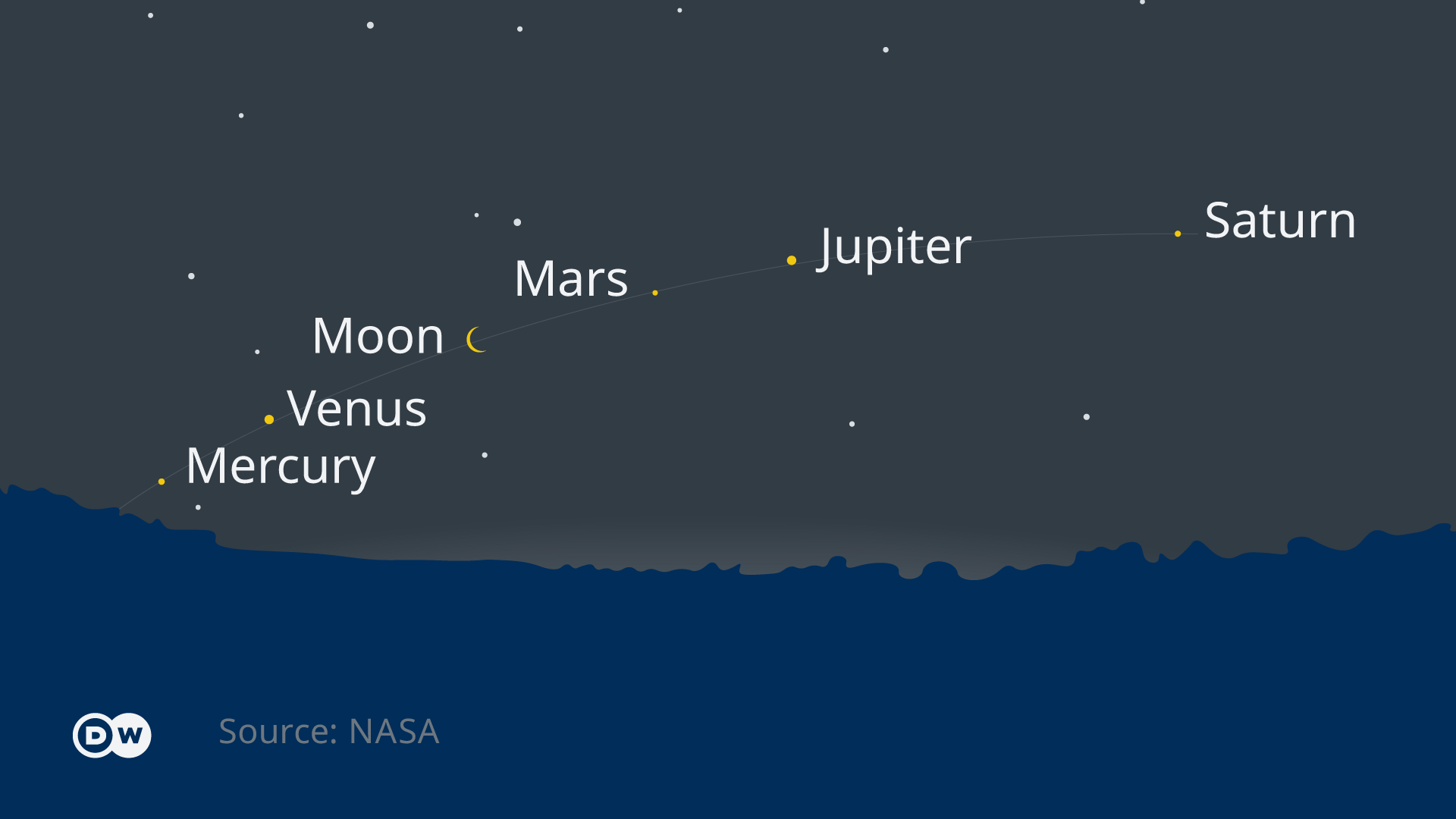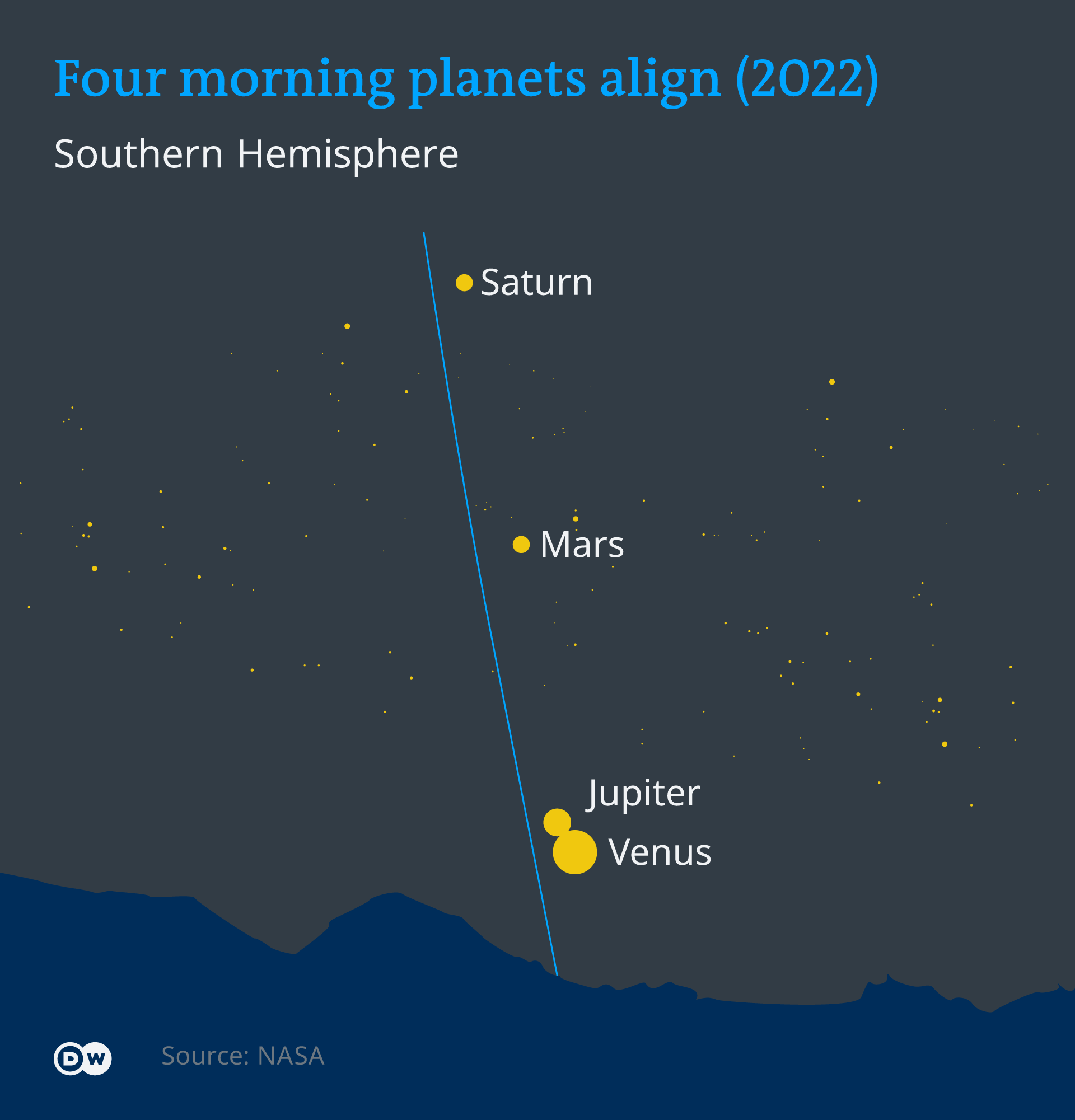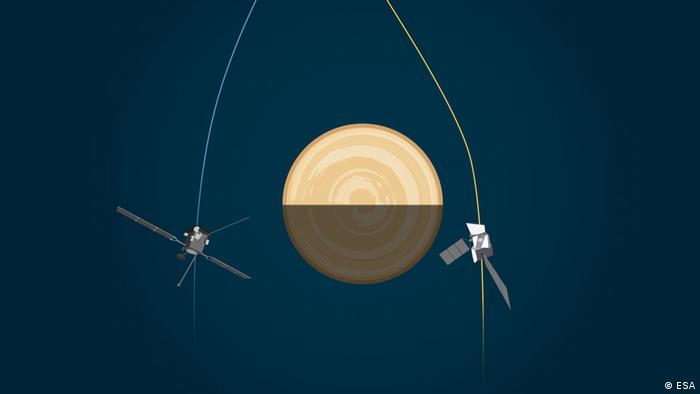In a year of spectacular astronomical events, five planets — Mercury, Venus, Mars, Jupiter and Saturn — are aligning with a crescent moon. Here's the how and the why.

A rare treat for stargazers in June 2022: Five planets align with a waning crescent moon
Over the past few months, our solar system has offered us a number of visual treats. Earlier in June, we had a strawberry supermoon. And in April, four planets aligned — Venus, Mars, Jupiter and Saturn — almost perfectly and were visible to the naked eye.
Now, in this final stretch of June, five of our closest planetary neighbors are aligned in perfect order of the solar system.
And not only that, but it has been possible to see them in the morning sky without a telescope, and for a short while they were accompanied by a waning crescent moon.
You can still see them for a few days.
A rare five-planet alignment
The last time these planets aligned like this was almost 20 years ago, in 2004, and it won't happen again until 2040.
It's rare because the planets all have different orbits of the sun.
Mercury, as the closest planet to the sun, orbits our star in the shortest time at just 88 days. Mercury is followed by Venus, which takes about 225 days. Next in line is Earth, which takes an average of 365 days and Mars takes 687 days. Then there's a big jump: Jupiter takes 12 years and Saturn takes 29 years to orbit the sun.
So, they are all orbiting at different speeds. And they rotate at different speeds and their orbits have slightly different shapes as well. All that makes it hard to get them lined up at the same time.
Even rarer are eight-planet alignments. Some research suggests eight-planet alignments happen roughly every 170 years, but that depends on your definition of a "perfect alignment" and some of it hasn't happened for 1,000 years.
How and when can I see the five planets align?
It's a very early morning call, pre-dawn in fact, but astronomers say you won't regret it.
Stargazers in the northern hemisphere should look to the horizon from east to southeast. You should be able to see the planets without a telescope or binoculars as they will be exceptionally bright to the eye.
If you do have a telescope or binoculars, you may even be able to see Uranus between Venus and our Moon.

In April, a four-planet parade was seen vertically in the southern hemisphere and in more of a diagonal or horizontal alignment in the northern hemisphere
Break up of a planetary constellation
This five-planet alignment is part of the same process we saw in April and is one of the moments when this special constellation starts to break up.
Over the coming months, Saturn, Mars, Jupiter and Venus will start to appear more and more spread out across the morning sky, says NASA on its What's Up blog. Come September, Venus and Saturn "will make their exits as morning objects," it says.
April also saw a planetary 'collision'
Some called it a collision, but what happened in April is known as a "conjunction."
A conjunction is when two planets or a planet and a star appear to be very close to one another when we look at them from the ground up.
And in April, it appeared as though Venus and Jupiter had got so close that they might even collide. But it was just an optical illusion.
In reality, when planets are in conjunction, they remain many millions of kilometers (miles) apart, but their orbits appear to bring them closer together. And, that's a magical thing to observe.
Edited by: Sonia Phalnikar
WHY WE FLY BY PLANETS, MOONS AND ASTEROIDSSpacefaring double-actFlybys? Nothing new. But two flybys of the same planet a day apart? That's special. In a first for space, two probes flew by Venus in August — BepiColombo, headed for Mercury, and Solar Orbiter on its way to the sun. They wouldn't make it to their goals without flybys and gravity assists. Sadly, these two didn't snap each other. They were 575,000 kilometers (357,000 miles) apart!

No comments:
Post a Comment